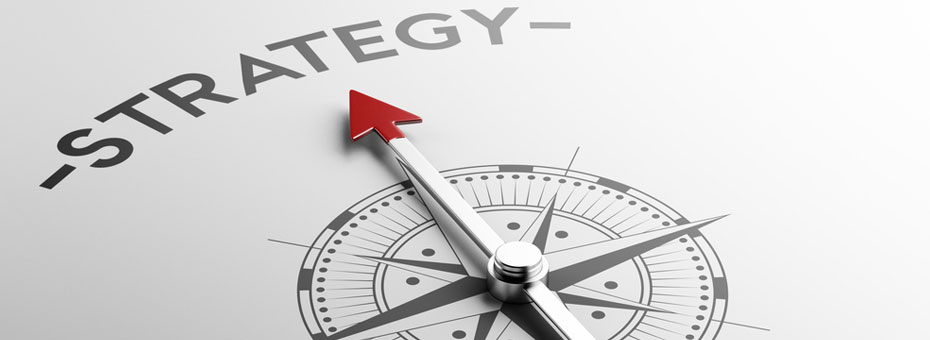In a recent Lean Post article, Peter Ward noted that “lean is not a strategy per se but can be much more important than strategy.” As two of our co-authors of the book The Lean Strategy, we’d love to add our thoughts to this argument. Indeed, we believe that Lean strategy involves a revolutionary mindset change—one that addresses the needs of today far more powerfully than any other approach.
A few years ago, a Toyota executive made a presentation to one supplier plant management team about what it meant to be part of Toyota’s supply chain. He kicked off by clarifying Toyota’s commitment and challenges in Europe at the time:
- Maintain sales growth in a competitive, fragmented market
- Continue to introduce innovative and high quality new vehicles
- Become a fully integrated European car maker (meaning, Japanese image but recognized as a corporate citizen)
- Become a leader on environmental issues (from power solutions to substances elimination).
We believe that lean strategy involves a revolutionary mindset change—one that addresses the needs of today far more powerfully than any other approach.
Supplier support (the voluntary participation of the supplier network) was essential for this to happen, he said. He also outlined the Toyota Way and the order of priorities of Toyota’s global purchasing policy: safety, quality, delivery, cost, sustainable growth.
He then shared what he expected the supplier to do: close the quality, delivery and cost gap with Japan (European suppliers having about ten times the defect and missed delivery rate of Japan) through better “business interruption” risk management.
Toyota, he noted, was constantly on the alert for any suppliers that might lead to non-supply, such as:
- Financial distress
- Strike
- Consolidation or restructuring
- Supply chain failures
To the supplier plant management team, as part of a large automotive group, this was their everyday normal conditions. What more could they possibly do? Toyota’s explicit requests were to:
- Share the bad news first
- Talk immediately and plan safety stock
- Continuously improve their people management
We must note that any Toyota anecdote we share is grounded in a specific there and then, and as such does not necessarily represent how the company works as a whole. With such a widespread and diverse business, each executive’s view is their own, and not the company’s. Still, every anecdote also reveals a common shared lean culture.
The strategic thinking evidenced here is completely different from the usual aggressive “taker” approach. In this traditional strategic framework, companies seek to conquer this or that segment, withdraw from another in order to reposition on this one, consolidate the portfolio, and so forth. They frame their strategy through a mindset of maximizing power and positioning.
In this case we are looking rather at a “fit” strategy, as in: how do we find better fit with a competitive, fragmented market, with what customers want (quality and innovation) with local stakeholders, with the environment.
The essence of lean is to figure out the right problems to solve, develop a culture of problem solvers and accelerate flows to reinvest in quality and new products.
Rather than attack and take it all, the plan is to understand better how our own actions make us weak and create business interruption risk. Value wants to flow, for example, from suppliers to automaker, from automaker to customers. How could the supplier discover and understand any false local optimizations that would damage this flow? The suggestions were designed to share problems early, figure them out and help each other. When Toyota realized how deeply the supplier was cutting into its margin to reach the required price, they compromised and sent engineers to help with the production process.
As we argued in our book The Lean Strategy, the essence of lean is to: figure out the right problems to solve, develop a culture of problem solvers and accelerate flows to reinvest in quality and new products. This is a strategy. Under this framework, lean is a personal learning strategy. It’s a business strategy when problems are global challenges.
Traditional “blue ocean” strategies can be summed up as: “let’s get out of the difficult, low-margin, highly competitive ‘red ocean’ business we’re in now and find an easier niche to exploit.” These strategies are based on two very strong assumptions:
- First, the assumption built into Michael Porter’s famous theory of competitive advantage that all is known and that all skills are commodities and can be purchased on the open market. Winning is therefore a question of playing the competitive game by better purchasing what you need to present a competitive offer to customers.
- Second, the idea since the end of the Cold War that externalities are no longer a business problem. The Milton Friedman approach that a firm’s only purpose is to maximize shareholder value has become largely dominant. Societal issues are not a business problem in this scenario.
Society, however, is screaming at business that both of these hypotheses are wrong. From Occupy Wall Street, to Greta Thunberg’s climate strike, people are trying to say: externalities are not externalities. They are our present and our children’s future.
The current tragic pandemic adds to the long list of natural disasters that tell us that business interruption risk is the new normal. We need to change our mind about strategy. The “exploit” strategies of the past work in a world of known knowns, but are disastrous when faced with unknown unknowns. We believe that what we need now is a learning strategy.
The “exploit” strategies of the past work in a world of known knowns, but are disastrous when faced with unknown unknowns.
Accepting this argument means buying into the basic idea that knowledge is not a thing or asset that can be purchased. It must be rather be developed. Knowledge is an active verb to pursue and not a static thing to amass. Sure, if you’re wealthy enough you can bribe your kids’ way into a good school – but that won’t make your kids better students or better learners. The same goes with companies – finding the right supplier won’t make you better at what they do.
Shifting from a strategy of acquiring “boxes” of knowledge, to developing knowledge through a consistent lean approach, requires a deep shift in thinking. The mental models we use to understand things are built from firsthand experience. Every time you solve a concrete problem, you add to your understanding of the situation (failures are learning ways that don’t work – knowledge still) and enrich your knowledge and judgment. If someone else solves the problem for you, you haven’t learned.
At all times, and especially in uncertain conditions such as today, lean is a learning framework.
Lean techniques create learning conditions, such as:
- Learning to better satisfy customers: will customers be satisfied with the way we’re handling this situation, or are we taking a risk to interrupt the flow of business by disappointing them?
- Learning to better practice just-in-time in logistics: reducing lead-time and replacing batch production by “as needed” production through ever increasing flexibility in order to reduce mis-delivery risk
- Learning to better detect defects and not pass them on: transforming the hierarchical chain into a technical chain of help to support people in catching issues right away and solving them before passing them on and so lowering quality risks.
- Learning to develop people’s confidence in what they do through standards and kaizen: teaching standards give employee a clear starting point for their skills and engaging in step-by-step improvement helps them develop their deep knowledge about their work.
- Learning to better support systems: making sure support systems are there to help employees (manpower, machines, materials, methods) in order to develop mutual trust between management – whose role is to offer supporting systems, not control work – and people – who can then be freed to add value conscientiously.
Together, these principles create the conditions in which people can learn from firsthand solving of problems and from working together. Joint problem-solving is ultimately the only known concrete key to collective intelligence.
These issues matter now more than ever, as the problems we’ve brushed under the carpet have become terrifying monsters under the bed. As we’ve seen with the flailing response to the pandemic, senior executives have largely lost all sense of: the importance of having people satisfied with their responses, the key role of logistics, the need to create effective test-and-respond mechanisms, and their ability to listen and coordinate individual initiatives.
Lean is an upside down strategy for an upside down world. Lean is not an exploiting strategy for a known known market; it’s a learning strategy to better manage business interruption risks in unknown unknown conditions. We desperately need it right now. We need to teach it and share it and practice it.
Virtual Lean Learning Experience (VLX)
A continuing education service offering the latest in lean leadership and management.






reducing lead-time and replacing batch production by “as needed” production through ever increasing flexibility in order to reduce mis-delivery risk
按需交易,适时调整。